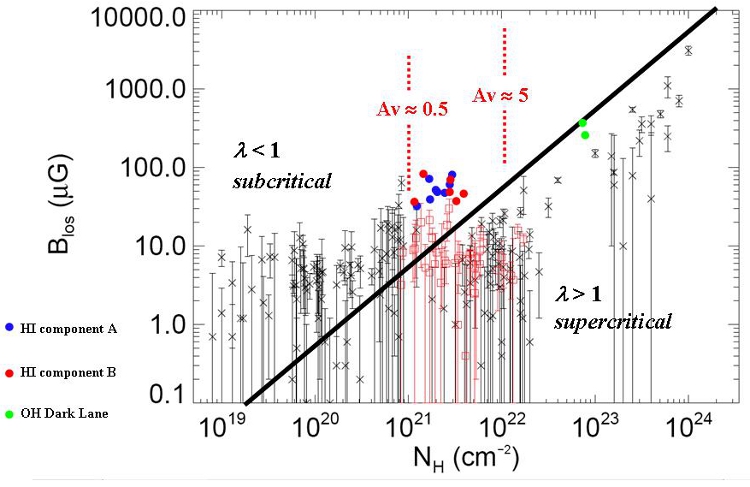| EPoS Contribution |
|
Magnetic fields in the Orion Veil - Precursors or products of massive star formation?
Thomas Troland U Kentucky, Lexington, US | |
| Strong magnetic fields are known to exist in massive star forming regions, but the origins of the fields are uncertain. Strong fields could be precursors to star formation, resulting from gravitational contraction of the original molecular cloud. Otherwise, strong fields could be the products of star formation, resulting from interactions between early-type stars and the surrounding gas. As the closest region of massive star formation, the Orion Molecular Cloud complex provides a prototype that can be studied in the greatest detail. The Orion Veil is a thin layer of neutral gas that lies just in front of the Orion Nebula and nearly in the plane of the sky. The Veil provides a rare opportunity to map magnetic fields and other physical properties in gas closely associated with massive star formation. We have mapped the magnetic field in atomic and molecular gas in the Veil via the HI and OH Zeeman effect. Using these data, as well as measurements of other relevant physical parameters in the Veil, we evaluate the relative importance of magnetic, thermal, turbulent and gravitational energies in this prototypical region. Magnetic energies greatly dominate turbulent energies in one of the HI velocity components, the only known example of this phenomenon in the ISM. Also, HI gas in the Veil is magnetically subcritical, like diffuse HI gas in the CNM. This latter result is illustrated in the figure which shows that HI fields in the Veil are substantially stronger than fields in other regions of the ISM with comparable N(H). What accounts for the unusual magnetic properties of the Veil? We employ a quantitative model in which magnetic field strengths are the result of star formation. In this model, gas in the PDR near an early-type star is compressed as it absorbs momentum from ionizing stellar radiation. Magnetic field strengths increase, and magnetic pressure eventually dominates gas pressure, leading to magnetostatic equilibrium. The equilibrium field strength scales as the square root of the flux of stellar ionizing photons (photons per sec per square cm) incident upon the gas. This model can also account for magnetic field strengths near other HII region/molecular cloud complexes including M17 and DR22. Magnetic pressure dominance, as outlined in this model, could play an important role in the physics of PDRs, influencing triggered star formation in galactic and extragalactic environments. | |
 | |
| Caption: Line of sight magnetic field vs. N(H) for an ensemble of Zeeman effect measurements, including published and unpublished data. The diagonal black line represents magnetically critical gas. Red and blue dots represent data for HI gas in the Orion Veil. Green dots are for molecular gas in the Veil. Other data points represent data for (1) HI gas in the CNM, via the HI Zeeman effect, N(H) < 10E21; (2) molecular gas via the OH Zeeman effect, 10E21 < N(H) < 1E23; and (3) molecular gas via the CN Zeeman effect, N(H) > 1E23. | |
| Collaborators: W.M. Goss, NRAO, US R.M. Crutcher, UIUC, US C.L. Brogan, NRAO, US D.A. Roberts, Northwestern U, US |
Suggested Session:
Magnetic Fields |

